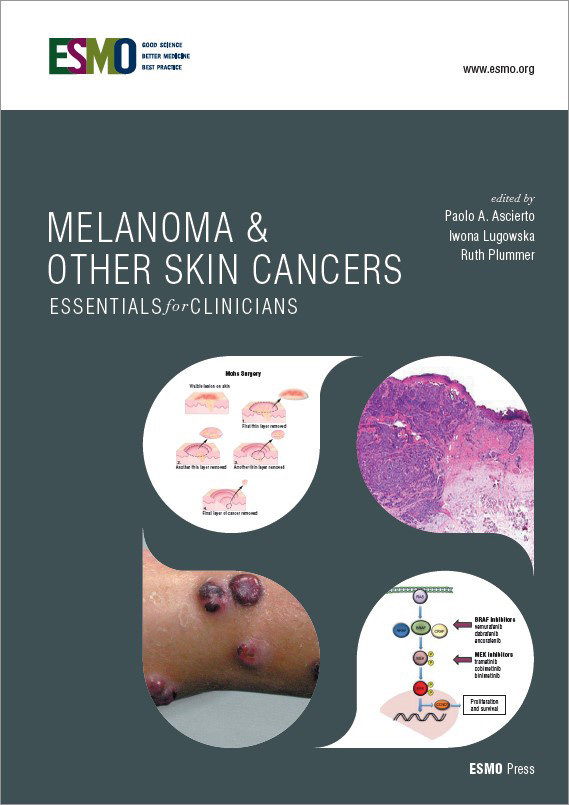Epidemiology, prevention, screening and surveillance of NMSC
NMSCs make up the greatest proportion of all human cancers, with an incidence of 8% worldwide.
Common NMSCs comprise basal cell carcinoma (BCC) arising from basal cells: 57%-80% of all NMSCs, and cutaneous squamous cell carcinoma (cSCC) arising from epidermal keratinocytes: 20%-25% of all NMSCs.
Rare NMSCs comprise Merkel cell carcinoma (MCC), cutaneous lymphomas, cutaneous adnexal tumours, Kaposi’s sarcoma and others.
BCC and cSCC show a low rate for distant metastases, but a higher risk for local recurrence. Major risk factors are chronic sun-damaged skin and immunosuppression.
Risk factors for aggressive courses of cSCCs are immunosuppression (e.g. after solid-organ transplantation), high tumour thickness (>6 mm), poor differentiation and localisation (e.g. lips, ears).
BCCs more often arise in males (ratio 2.1:1) and elderly patients; the median age at diagnosis is 67 years.
Around 80% of all BCCs are located in the head and neck region, followed, more rarely, by the hands.
cSCCs usually originate from precancerous lesions such as actinic keratosis, but they can also develop de novo.
Histology should always confirm the diagnosis of precancerous lesions before using any therapeutic modality other than surgery.
High-risk patients should be screened regularly with a whole-body examination, e.g. at 3-month intervals after organ transplantation or after previous high-risk NMSC.
Revision Questions
- Which malignancies belong to common and which to rare NMSC?
- From which cells does squamous cell cancer arise?
- Name three risk factors for the emergence of cSCCs.




